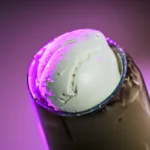If you’re looking for a way to take your cakes and cupcakes to the next level, then you need to learn how to make fondant icing! Fondant is an amazing icing that can be used to create all sorts of incredible designs. And the best part is, it’s not as hard to make as you might think!
In this article, we’ll show you how to make fondant icing step-by-step. We’ll also give you some tips on how to use it and some beginner-friendly fondant icing recipes. So if you’re ready to learn how to make amazing cakes and cupcakes, read on!
Table of Contents
How to Make Fondant Icing
Fondant icing is a sugar paste that can be used to cover cakes or create decorations. It can be made from scratch using sugar, water, and gelatin, or you can buy it ready-made. Ready-made fondant is often flavored with vanilla, almond, or lemon.
To make your own fondant:
- start by dissolving gelatin in water.
- Then, heat sugar in a saucepan until it dissolves.
- Once the sugar has dissolved, add the gelatin mixture and stir until combined.
- Allow the mixture to cool slightly, then knead it until it’s smooth.
If you’re using ready-made fondant, simply knead it until it’s pliable. Then, roll it out on a surface that’s been dusted with confectioners’ sugar. Use a knife or pizza cutter to trim the fondant to the desired size.
Once your fondant is ready, you can use it to cover a cake or create decorations. To cover a cake, lightly brush the surface of the cake with water and then place the fondant on top. Smooth it down with your hands and then trim off any excess.
To create decorations, roll the fondant out into a thin sheet. Use cookie cutters or a knife to cut out shapes. You can also use a piping bag fitted with a small tip to pipe out small details.
When you’re finished working with the fondant, store it in an airtight container at room temperature. If it becomes too hard, you can knead in a little bit of water to soften it up.
How to Make Fondant at Home
Fondant is a sugary paste that is often used to cover cakes or other desserts. You can purchase fondant at most cake supply stores, but it is also possible to make your own at home. Here is a recipe for homemade fondant.
Ingredients:
- 1/2 cup water
- 1/2 cup light corn syrup
- 1 teaspoon vanilla extract
- 1/8 teaspoon salt
- 2 pounds confectioners’ sugar
Instructions:
- Combine the water, corn syrup, vanilla extract, and salt in a saucepan over medium heat. Heat the mixture until it comes to a boil.
- Remove the saucepan from the heat and stir in the confectioners’ sugar. Stir until the sugar is completely dissolved.
- Allow the mixture to cool slightly. Once it is no longer hot to the touch, knead it until it forms a soft, pliable dough.
- Use the fondant immediately, or store it in an airtight container for up to 2 weeks.
With this recipe, you can easily make delicious fondant at home!
How do you make the perfect fondant finish?
To get a nice, clean finish to your fondant cake, make sure you frost your cake smooth with a thin layer of buttercream frosting. This will prevent any imperfections on your cake from poking through the fondant. If you’re using a lighter shade of fondant, frost your cake with white buttercream.
Here are some tips for getting a smooth buttercream frosting:
- Start with a clean, cool cake. Your cake should be completely cooled before you start frosting. Any residual heat will melt the butter in the frosting and make it difficult to spread.
- Use a pastry bag. A pastry bag fitted with a plain tip or star tip will give you the most control when spreading the frosting on the cake. If you don’t have a pastry bag, you can use a zip-top bag with the corner snipped off.
- Be careful not to over-mix. Over-mixing can make the buttercream too soft and difficult to spread.
- Chill the cake before adding fondant. Once you’ve finished frosting the cake, place it in the refrigerator for about 30 minutes to firm up the buttercream. This will help the fondant adhere better to the cake.
After your cake is chilled, it’s time to add the fondant:
- First, dust your work surface and rolling pin with powdered sugar to prevent the fondant from sticking.
- Roll out the fondant to a thickness of about 1/8 inch.
- Carefully drape the fondant over the cake, using your hands to smooth it down and remove any wrinkles or air bubbles.
- Trim off any excess fondant from the bottom of the cake with a sharp knife.
How do you use fondant for beginners?
Fondant is easiest to use in a cool, dry room. If your room is too hot, it will make the fondant too soft to work with. Use a fondant roller to roll it out on a clean, dry surface – a silicone pastry mat works great! Whatever your surface, dust it with powdered sugar to prevent sticking.
When you’re ready to start working with the fondant, knead it until it’s pliable. Then, roll it out to about ¼-inch thickness. Use a sharp knife or pizza cutter to cut out shapes, and then lift them carefully with a spatula.
If you want to add color to your fondant shapes, use gel food coloring. Start with just a drop or two and knead it in until you get the desired shade. If the fondant becomes too sticky, dust it with more powdered sugar.
Once your fondant shapes are colored and cut out, you can decorate them any way you like. Use smaller cutouts to create patterns or faces on larger pieces. You can also use a toothpick to add texture. Or, if you’re feeling really creative, try using molding tools to create 3D designs.
If you want to add your fondant shapes to cakes or cupcakes, the best way to do it is with a little bit of water. Put a small amount of water on the back of the fondant piece and press it gently into place. The water will act as glue and help the fondant stick.
With a little practice, you’ll be a pro at using fondant to decorate your cakes and cupcakes!
What is Fondant?
Fondant is a type of icing that is made from sugar, water and corn syrup. It can also contain gelatin, which makes it more structurally sound for sculpting.
Some bakers prefer to use marshmallow fondant, as it gives the cake a more pillowy texture. Marshmallow fondant is made from melted marshmallows, powdered sugar and water.
Fondant is often used to cover cakes, as it gives a smooth finish. It can also be used to make decorations such as flowers or toppers.
If you are using fondant for a cake, it’s important to knead it well so that it’s pliable. You will also need to roll it out thinly so that it doesn’t add too much bulk to the cake.
Is icing and fondant the same?
You might think that all sweet, delicious frostings are created equal. But there are actually some big differences between fondant and icing.
Icings are usually thin, runny mixtures used for glazing cakes and cookies, but because fondant is made by super saturating water with sugar, it forms a thick, rollable paste.
This makes fondant perfect for covering cakes in a smooth layer, as well as creating decorations like flowers or shapes.
Icing is typically made with confectioner’s sugar, butter, milk, and flavoring, whereas fondant usually contains gelatin or marshmallows in addition to sugar.
This means that fondant has a chewy texture, while icing is more smooth and creamy.
Fondant is also more versatile when it comes to decorating. You can roll it out into a thin sheet and use cookie cutters to create shapes. You can also mold it into 3D decorations.
The next time you’re looking to decorate a cake or cookies, think about which type of frosting will best suit your needs.




